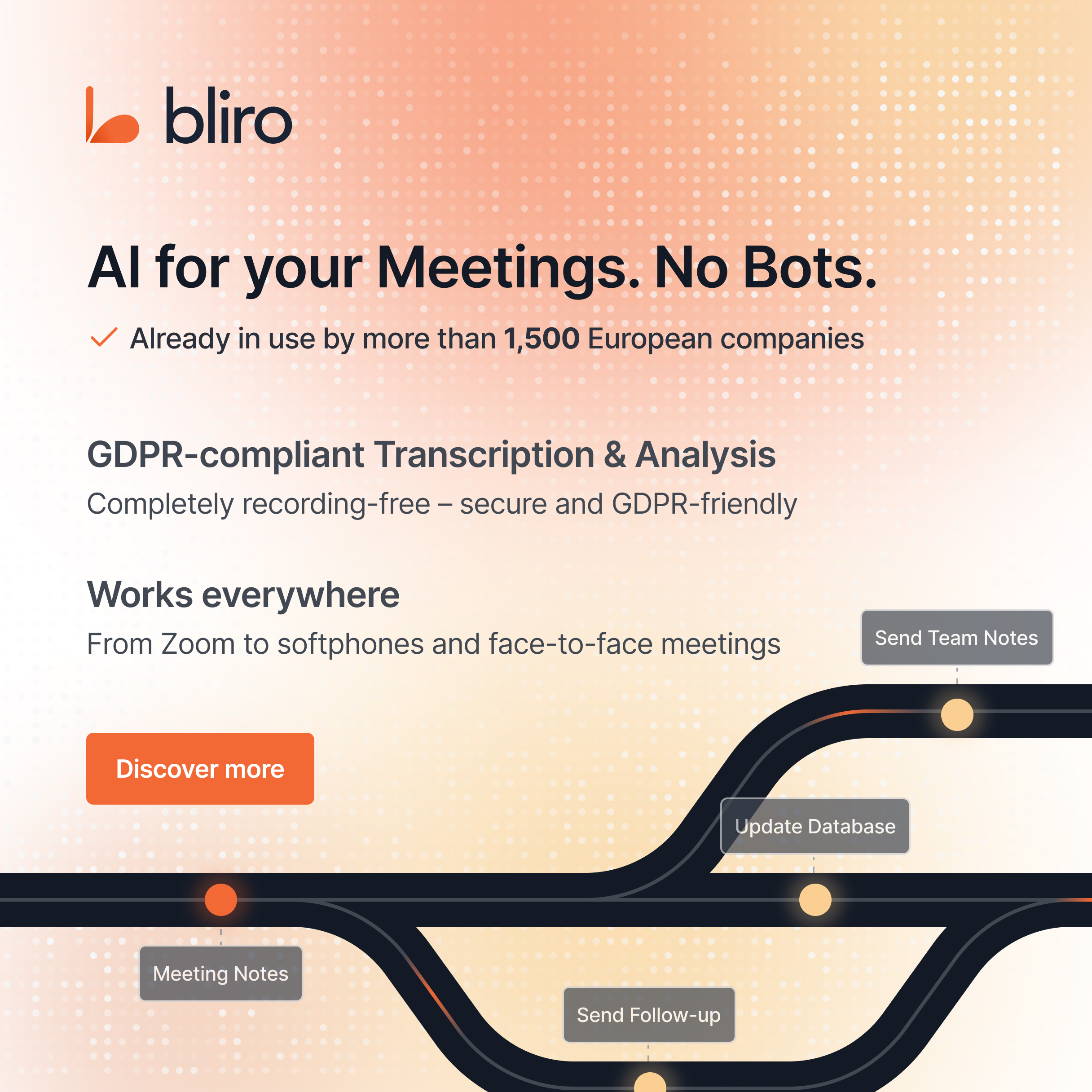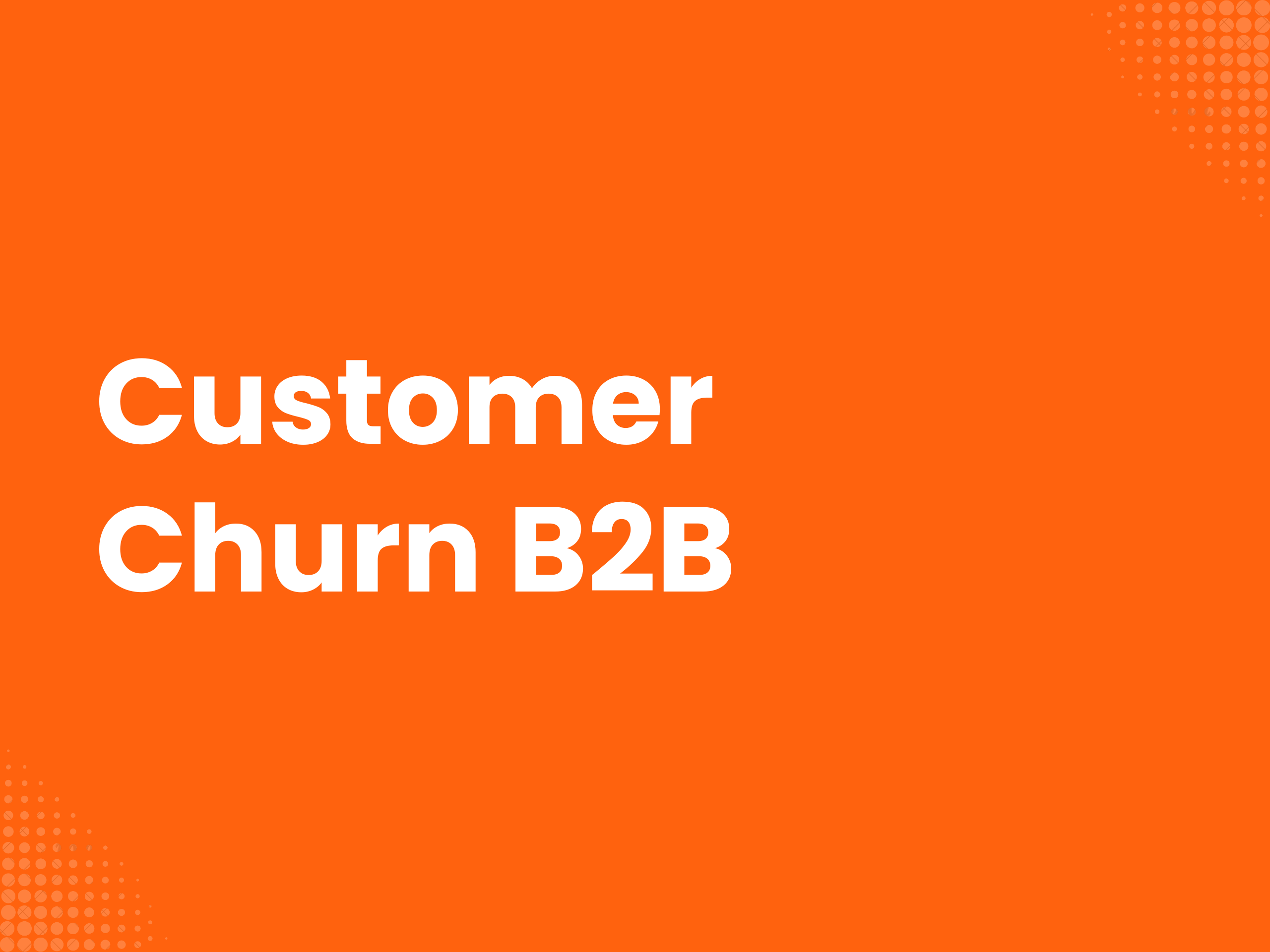Customer Churn costs B2B companies millions. A reduction in the churn rate by just 5% can increase your profitability by an impressive 25% to 95% - as studies from Bain & Company and Harvard Business School show. These figures make it clear that customer churn is one of the most critical challenges in B2B business.
The churn rate measures how successful you are building long-term business relationships and securing recurring sales. High churn rates signal problems with products or services. Industry differences are significant: Telecommunications companies record annual rates between 30% and 35%, while e-commerce subscriptions lose an average of 5% monthly.
Learn how to understand customer churn in the B2B sector, calculate your churn rate precisely and implement effective strategies to win back customers. In addition, we will show how AI tools such as Bliro help to strengthen business relationships and reduce your churn rate sustainably through intelligent customer communication.

Understanding customer churn in B2B: Definition, types & critical effects
Customer churn hits B2B companies harder than other business models. The term “customer churn” describes a complex phenomenon with direct effects on your company's success.
Churn rate definition and meaning
Customer churn describes the process by which customers end their business relationship. The churn rate measures the percentage of customers who leave within a specific period of time - monthly, quarterly or annually. This key figure acts as a critical indicator of corporate stability, particularly in recurring business relationships.
In a B2B context, Churn focuses primarily on contractually regulated customer relationships. Experts distinguish between two main types:
- Voluntary emigration: The customer's conscious decision to change providers
- Involuntary migration: External factors such as company exit from the market
In addition, experts differentiate between customer churn (lost number of customers) and revenue churn (lost revenue due to cancellations or downgrades). This distinction is crucial, as individual B2B customers often generate significantly different sales volumes.
Difference between churn and retention
The churn rate shows lost customers, while the retention rate measures the proportion of customers who stayed with the company over a period of time. Both key figures are 100% complementary and should be considered together for a complete picture of your customer relationships.
Particularly valuable: Long-term customers buy more (higher share of wallet) and require less support. An increase in the retention rate of just 5% can increase your company profit by up to 95%.
Why B2B churn is particularly painful
B2B customer churn weighs more heavily than in the B2C segment. Several factors reinforce this impact:
B2B companies typically have fewer customers with higher average sales per customer. Every lost customer is therefore more painful. Companies can lose up to 20% of their annual turnover due to emigrating customers.
An increased churn rate also triggers a vicious circle: managers and employees are demoralized, concerns about jobs arise and the focus on core business suffers. As B2B new customer acquisition is more time-consuming and expensive, this negative cycle is intensifying.
Word of mouth is also critical. Dissatisfied B2B customers share negative experiences in closely connected markets, which can lead to exponential churn.
Migration risks at an early stage. The average annual B2B churn rate is around 11%, but varies widely by industry: SaaS companies record 10-14%, telecommunications up to 31%. Remarkable: 44% of B2B companies don't know their own churn rate - a costly omission.

Calculate churn rate: formula, examples & tools for precise customer analysis
The precise calculation of your churn rate forms the basis for effective customer loyalty strategies. Without this key figure, you lack the database for targeted measures against customer migration.
The churn rate formula step by step
For the calculation, you need two core values: the number of customers who emigrated and the total number of customers at the beginning of the period. The basic formula is:
Churn rate (%) = (Customers migrated to customers at the start of the period) × 100
First determine the period under consideration - month, quarter or year are typical. Then record your number of customers at the beginning and count the migrations over the course.
B2B companies can choose between different calculation methods:
- Customer churn rate: Counts the number of lost customers
- Sales churn rate: Calculates lost sales divided by total revenue at the start of the period
Example calculation for B2B SaaS
A practical example: Your SaaS company starts the month with 800 customers and loses 100 of them.
Churn rate = (100 ÷ 800) × 100 = 12.5%
This 12.5% is on average SaaS of around 10-14%.
Monthly vs. annual measurement: Which period is right?
The period under consideration depends on your business model:
- Monthly measurement: Ideal for companies with high customer turnover, such as e-commerce. Note: 5% monthly already means 14.3% loss per quarter
- Annual measurement: More useful for B2B companies with longer contract terms and a more stable customer base
Attention: A monthly rate of 5% adds up to around 46% over twelve months - a critical value for any company stability.
Experts recommend regular measurements, industry comparisons, and analysis of the impact on your customer acquisition costs (CAC).
Tools for automated churn calculation
Modern tools significantly simplify the calculation:
- Excel/Google Sheets Templates: Basic Calculations and Visualizations
- CRM systems: Integrated churn analyses in many modern solutions
- AI-powered analytics: Tools like Bliro help companies identify patterns and motivations in customer conversations
All-in-one solutions also offer customer retention rate calculators, revenue loss analyses and detailed product evaluations.
The calculation is just the start. Decisive: Consider this key figure together with factors such as new customer acquisition. AI tools such as Bliro recognize warning signs early on and enable proactive action before customers actually cancel.
5 main reasons for customer churn in the B2B sector
It's not without reason that B2B customers are leaving. Companies lose up to 20% their turnover due to emigrating customers - but the causes are identifiable and solvable. Understand the five critical factors that drive your customers to switch.
Bad customer service
Poor service causes 70% of all customer churn in the B2B sector. This figure is alarming - and avoidable. Critical problem areas:
- Incompetent or unfriendly staff
- Slow response times for support requests
- Unresolved complaints and issues
96% of all dissatisfied customers don't complain - they silently change providers. Even more drastic: A single negative experience is enough for 32% of previously enthusiastic customers to leave.
Unclear product communication
Misleading communication creates false expectations and leads to frustration. Customers quickly develop a negative perception when they don't feel sufficiently informed or their concerns are ignored. Transparency is crucial - particularly when it comes to product changes, service updates or contract modifications.
Lack of onboarding
Inadequate implementation processes put a strain on customer relationships right from the start. A well-thought-out implementation process leads to 50% higher customer loyalty. B2B SaaS products with complex features look overwhelming without proper guidance.
Effective onboarding:
- Reduces the time until the first value experience (time-to-value)
- Increases user competence and satisfaction
- Demonstrably reduces the risk of migration
Value for money
Poor price-performance ratios drive customers to compete. It is not the absolute price that is decisive, but the relationship between costs and perceived value. Customers remain loyal to companies that meet their price expectations - provided that the price justifies the value created.
Important point: Customers are leaving not only because of high prices, but also because of price changes. Price increases without any discernible added value lead to increased churn and negative brand perception.
Changing customer needs
Customer needs are constantly changing - due to new market requirements or internal customer changes. Vendors who do not recognize these changes early on and adapt their products accordingly risk alienating their customers.
Bliro's AI-powered transcription tool detects changes in customer behavior during conversations. With information from sales representatives from their customer languages, the reasons given can be identified.
Churn analysis and prediction: How to identify migration risks at an early stage
Proactive churn prevention requires more than retrospective analysis of figures. You must predict potential migration before it happens. The systematic analysis and prediction of customer churn thus becomes a decisive competitive advantage.
Churn analysis steps at a glance
An effective churn analysis follows a structured procedure:
- Create a data basis: First, standardize your customer database so that algorithms can analyze consistent data. Also check the data accuracy, as incorrect contact information can already pose a risk of churn.
- Combine data sources: ERP data (historical sales data) form the most important basis for every churn model. Supplement this with demographic data, service data, and interaction information.
- Define target variables: Clearly define what counts as “emigration.” In the B2B sector, this can range from the complete end of the contract to a reduction in the scope of use (soft churn).
Cohort analysis for pattern recognition
The cohort analysis enables precise churn forecasts by grouping customers with an identical starting point (approximately the first month of purchase). This method reveals:
- Distinction between cohort effects (special campaigns), age effects (customer duration) and period effects (seasonal influences)
- Identification of critical times with increased migration
- Identification of technical weaknesses, product deficiencies or inaccurate target group approaches
Particularly valuable: The analysis of inactive customer cohorts shows who has not triggered any more orders after the second or third purchase.
Customer health score as an early indicator
The Customer Health Score measures the strength of your customer relationships through various metrics:
- Product usage data: frequency and depth of use of specific features
- NPS and customer satisfaction: Division into promoters (9-10), passives (7-8) and detractors (0-6)
- CSM Pulse: Subjective assessment of the customer care team after interactions
Product usage data is often more meaningful than NPS values. However, a health score does not provide a reliable future forecast, but rather guidelines for prioritization decisions.
Churn prediction with AI tools
Modern AI solutions automate migration forecasting by:
- Segmentation: AI models find similar customer groups and predict their likelihood of churn
- Real-time alerts: Algorithms recognize early warning signals such as missed payments or declining interest
- Prioritization: Combining churn risk and customer lifetime value identifies the most valuable customers at risk
Predictive accuracy is constantly improving as models learn from previous predictions.
How Bliro helps with analysis
Bliro combines all analysis techniques in one solution:
- Automatic ERP data integration and transfer of transcripts from conversations to your CRM
- Early detection of warning signals that went unnoticed without appropriate analysis
- Custom templates for standardized insights from conversations
These analyses of the discussions create the basis for targeted measures to reduce churn.

5 proven strategies against customer churn in the B2B sector
Effective churn prevention requires concrete actions. As soon as you know the causes of emigration, you can take countermeasures and strengthen your customer loyalty with proven strategies.
Collect customer feedback systematically
Regular surveys uncover problems before customers leave. Use various channels such as email, SMS, or WhatsApp for higher response rates. Decisive: Respond visibly to the feedback. Customers are 21% more likely to participate in surveys if they recognize that their opinion is leading to improvements.
Individual communication through AI analysis
Bliro enables personalized customer interactions through intelligent conversation evaluation. You create tailor-made offers and address customers in a targeted manner. Result: 22% better conversion rates and 11% higher order values.
Time-to-value through optimized onboarding
Well-thought-out implementation processes shorten the time until the first success and increase customer loyalty by 50%. Put on:
- Intuitive steps for product launch
- Interactive tutorials and self-help tools
- Progress indicators for more motivation
Automated onboarding processes reduce implementation time by up to 95%.
Added value through B2B loyalty programs
Loyalty programs strengthen customer relationships and create more profitable, long-term partnerships. Effective Approaches:
- Exclusive discounts and special offers
- Points systems for regular customers
- Personalized rewards based on customer interests
Service quality as protection against emigration
70% of customer churn is caused by poor service. Investments are particularly worthwhile here. Offer quick response times and multiple channels of contact. Proactive support pays off: Regular customer relationship checks help solve problems in good time.
Conclusion
Customer churn costs B2B companies more than just lost customers - it directly threatens your profitability. Lowering the churn rate by 5% can increase your company profit by 25 to 95%. These figures show that every investment in effective customer management pays off.
Continuous monitoring of your churn rate is the foundation of successful customer loyalty. 44% of B2B companies don't know their own churn rate - an expensive blind flight. The calculation is simple: emigrated customers divided by the total number of customers at the beginning of the period, multiplied by 100.
Poor service, unclear communication, and poor onboarding drive customers away. Particularly problematic: 96% of all dissatisfied customers don't complain - they simply change providers. Active early detection is thus becoming a survival strategy.
Successful churn reduction requires more than analysis. Proactive customer feedback, optimized onboarding processes, and personalized communication create measurable improvements. These strategies work - if you implement them systematically.
Customer churn can never be completely stopped. But with the right tools, you can significantly reduce your churn rate and build profitable, long-term business relationships. Bliro gives you data-driven insights and automated processes that directly improve your customer relationship management - and thus increase your profitability.




